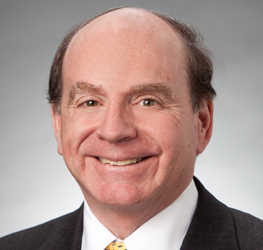
On April 22, 2019, the Centers for Medicare and Medicaid Services (CMS) announced it is proposing two alternative payment programs focused on the provision of primary care and the primary care physician relationship*. Entitled Primary Care First, the two payment models include a general payment model option and a Seriously Ill Population (SIP) payment model option.
The Primary Care First model options are based on the principles of the Comprehensive Primary Care + Model and emphasizes the importance of the primary care relationship in health care delivery. The Primary Care First models will be offered in 26 geographic regions for a 2020 start. The regions include, among others, all of the following states: California, Colorado, Florida, Massachusetts, Michigan, New Jersey, Rhode Island, and Virginia as well as regions in New York (around Buffalo and the North Hudson-Capital region) and the Greater Kansas City region.
Eligibility Criteria of the Primary Care First Model
Participation in Primary Care First is voluntary. Those eligible for participation in the general Primary Care First payment model are primary care practices with advanced primary care capabilities that meet the following eligibility criteria:
- Are located in one of the 26 Primary Care First regions.
- Include primary care practitioners (MDs, DO, CNS, NP and PA), certified in internal medicine, general medicine, geriatric medicine, family medicine, and hospice and palliative medicine.
- Provide primary care health services to a minimum of 125 attributed Medicare beneficiaries at a particular location.
- Have primary care services that account for at least 70% of the practices’ collective billing revenue. For a multi-specialty practice, 70% of the practice’s eligible combined practitioners’ combined revenue must come from primary care services.
- Have experience with value-based payment arrangements or payments based on cost, quarterly and/or utilization performance such as shared savings, performance-based incentive payments and episode-based payments, and/or alternatives to fee-for-service payment such as full or part capitation.
- Use 2015 Edition Certified Electronic Health Record Technology (CEHERT), support data exchange with other providers and health systems via Application Programming Interface (API) and connect to the regional health information exchange.
- Attest to a limited set of advanced primary care capabilities such as a 24/7 access to a practitioner or nurse call line and empanelment of patients to a practitioner or care team.
- Meet the requirements of the Primary Care First participation agreement.
CMS intends to encourage other payers, including Medicare Advantage Plans, commercial health insurers, Medicaid managed care plans and State Medicaid agencies, to align payment, quality measurement and data sharing with CMS in support of the Primary Care First participating practices.
Seriously Ill Population Model Overview
With respect to the SIP model, CMS will attribute patients without a primary care practitioner or a care coordinator to Primary Care First practitioners, which typically provide hospice or palliative care that specifically opt to participate in that payment model. Primary care practitioners that apply for participation may seek to be attributed and furnish services to SIP patients that CMS identifies in the service area who express interest in the model. Such practices will be responsible to reach out to such patients to coordinate their care and to focus on ensuring they are clinically stabilized.
Payment Structure
The Primary Care First models will utilize a payment structure that includes:
- “a payment mechanism that allows care to be driven by clinicians rather than administrative requirements and revenue cycle management”;
- A population-based payment along with a flat primary care visit fee;
- A performance based adjustment providing an upside of up to 50% of revenue as well as a small downside (10% of revenue) incentive to reduce costs, reduce acute hospital utilization and improve quality, which will be assessed and paid quarterly.
Payments for SIP patients will differ from the general Primary Care First payment model, with payments for SIP patients set to reflect the high need, high risk nature of such patients, as well as inclusion of an increase or decrease in payment based on quality.
Timing for Primary Care First
CMS anticipates releasing a Request for Application in the spring of 2019 for a start in January of 2020. CMS also expects another round of Primary Care First applications in 2020 for a January 2021 start. Practices participating in CPC+ Track 1 or Track 2 may choose to end their participation in CPC+ early in order to participate in Primary Care First starting in January 2021. The SIP payment model option will follow that timeline.
The Importance of Primary Care First
Primary Care First shows CMS’ commitment to further testing of alternative payment models. It is expected that the taking downside risk will qualify as an Advanced Alternative Payment Program under MACRA. The focus on primary care in the Primary Care First models reflects the perceived importance of primary care in our care delivery system and the belief that primary care may play an important role in reducing the overall cost of health care.
* On the same day, CMS also announced Direct Contracting payment model programs, which will be addressed in a separate Health Care Law Today post.
